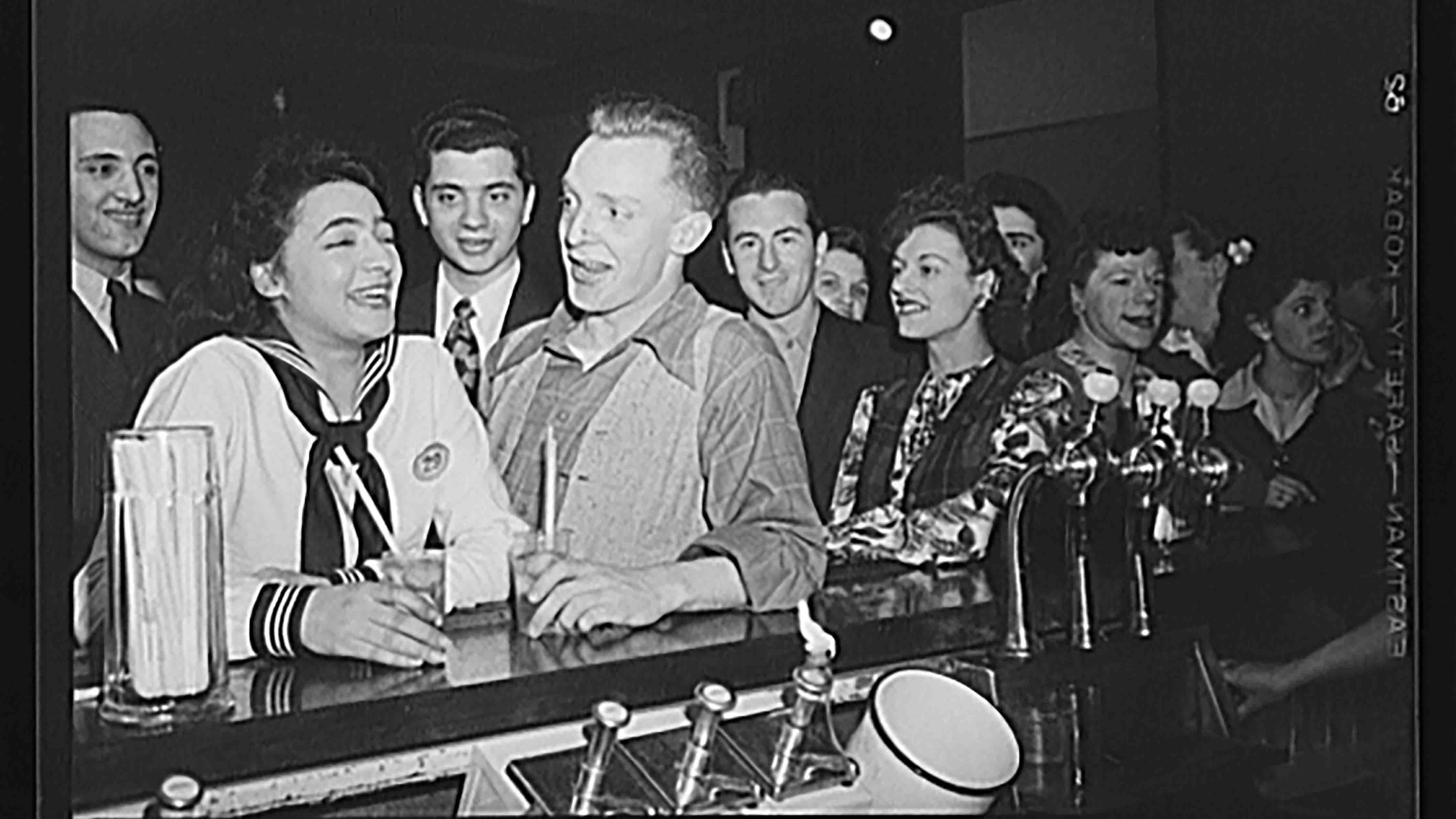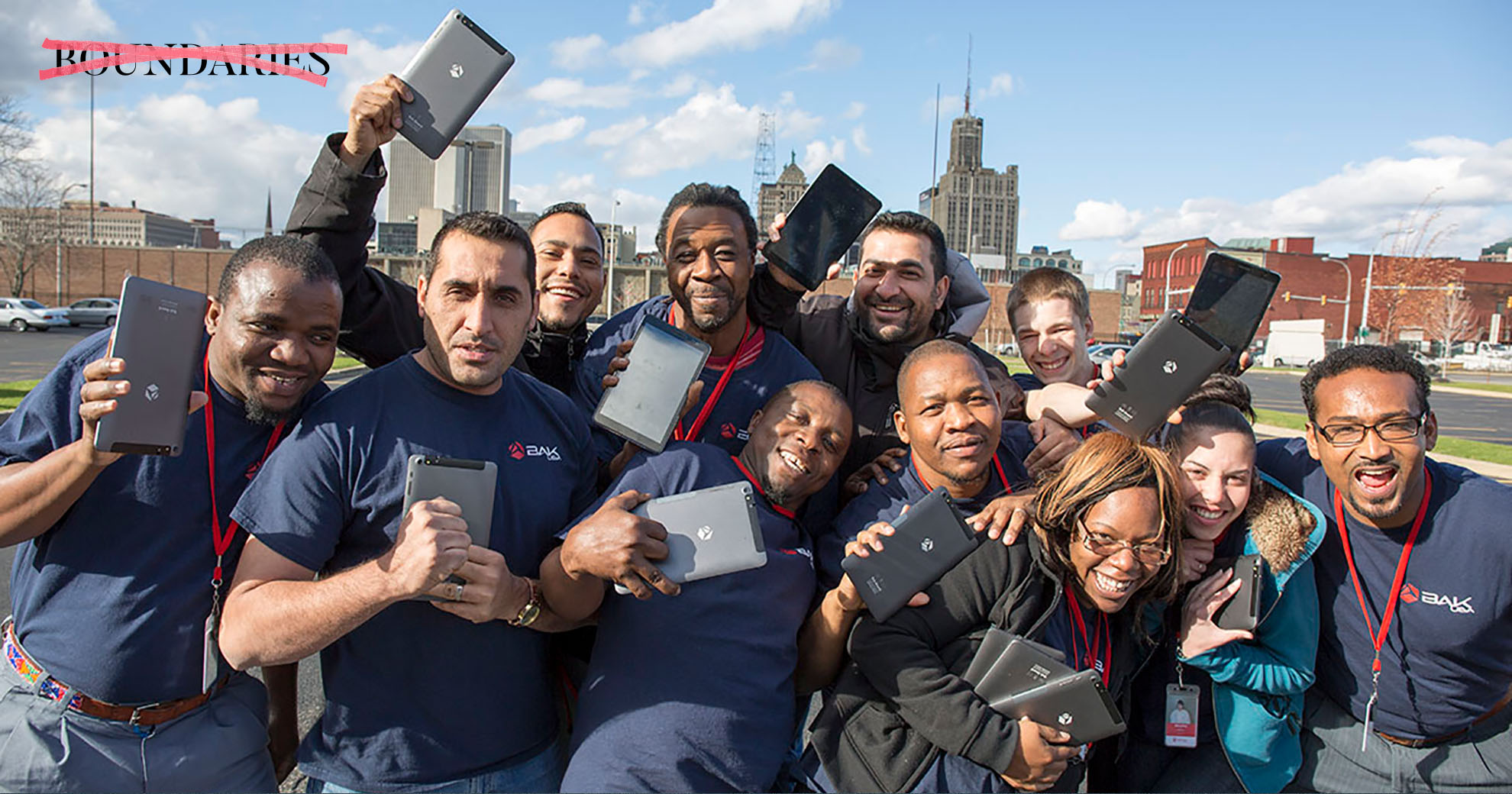Photo by Marjory Collins. Buffalo Circa 1944.
Written by Caitlin Hartney
“Women wouldn’t sit at bars if they knew how they looked.”
Or so opined a bartender at a “swank” Delaware Avenue cocktail lounge in 1944. His notion of gendered respectability appeared in the Buffalo Courier-Express in March of that year amidst a short-lived but aggressive campaign to ban women from being served at Buffalo’s bars unless escorted by a man. Buffalo City Court Judge John Kelly, the campaign’s primary champion, justified the proposal by framing it as a solution to the city’s so-called victory girl problem.
During World War II, victory girl was the pejorative moniker yoked to women who had sex with soldiers outside of marriage. Across the country, public officials vilified victory girls—and promiscuous women, generally speaking—as agents of venereal disease whose proclivities bordered on prostitution and threatened the health of the military. Propagandists smeared women as predators. One Buffalo newspaper likened a man’s being incapacitated with venereal disease to being “felled by an enemy bullet,” equating sexually active women with foreign adversaries from whom soldiers needed protection.
If national security vis-à-vis venereal disease was Kelly’s stated grounds for attempting to ban women from bars, it was not his or his supporters’ sole motive. The campaign was also a response to social change engendered by war. Massive production demands, coupled with the shunting of able-bodied men abroad, created a labor shortage the government called on women to alleviate. By 1944, women in Buffalo had diverted their attentions away from their housewifely duties to assume well-paid industrial jobs previously thought to require a man’s “particular faculties.” And many of these women war workers spent their pay at bars.

In 1944, as people began to imagine post-war society, anxieties over the state of the American nuclear family and women’s newfound place in the labor economy heightened. Self-actualizing women, epitomized by the sexually active, employed, intemperate female bar patron, became emblematic of disconcerting change marked by feminine incursions into traditionally masculine spaces—both the physical (e.g., manufacturing plants) and the psychological (e.g., personal autonomy). Reactionaries like Kelly sought to reassert heteronormative boundaries by restricting women’s access to another classically masculine domain: the barroom.
By the 1940s, women were no strangers to taverns, but their presence was throttled by social convention. In many venues, a woman was expected to enter through a separate entrance and to remain seated at a table. A single woman who saddled up to the bar itself challenged the rules governing middle-class respectability. Moreover, she was an affront to those, like New York humorist Don Marquis, who longed for the days when bars were the exclusive territory of men:
Women come into this New Barroom. Not through a Family Entrance, but through the front door. They go right up to the bar. They put a foot on the brass railing. They order; they are served; they bend the elbow; they hoist; they toss down the feminine esophagus the brew that was really meant for men…There is no longer any escape …no nook amongst the ruins of civilization, where the hounded male may seek his fellow and strut his stuff, safe from the atmosphere and presence of femininity.
Through March of 1944, Kelly and his supporters in the media and law enforcement leveraged these various anxieties to drum up support for their patriarchal agenda. Short of a citywide ban (which never did end up becoming law), they used what legal means they did have to make single women feel unwelcome at downtown bars. Venues like Hagan’s and Knockout Brennan’s became “men-only” as a matter of policy. Police staked nightlife districts and subjected women to surveillance and questioning. At places like Metzger’s Grill (390 Pearl) and the Charty Hotel (136 Exchange), they arrested women caught engaging in or suspected of the intent to engage in extramarital sex and published their names in newspapers. They force-tested these women for venereal disease and held them without bail until their results returned. Meanwhile, male accomplices were never taken into custody; their names were never made public. In effect, Buffalo’s bars operated as sites of power, where women were evaluated by their relationship to men. In exchange for access, they were required to perform the role of chaste wife or girlfriend.
In the grand scheme of American civil rights abuses, women’s restricted access to alcohol might seem trivial. But the situation takes on greater meaning when we consider three things.

First, the indignities women faced on the basis of gender surely informed how they perceived themselves. To enter a bar as a woman was to be reminded that you were second class. And if you also happened to be a woman who transgressed sexual conventions, you were additionally marked deviant. How this might have been doubly oppressive for members of Buffalo’s lesbian community is a subject worthy of its own article.
Second, bars are not simply conduits of alcohol. Throughout our country’s history, they have functioned as critical sites of information sharing, political debate, and professional and social mobility. Men did not just drink at bars; they networked, formed identities, and exchanged ideas. In effect, they practiced democracy. To have been restricted from participation was to be denied power and opportunity.
Third, consider that free and equal access to public space is requisite to full citizenship. To have a specific set of rules for one group, either by law or custom, is to establish a dichotomy of difference and a hierarchy of power. The women of 1944 Buffalo who continued to visit bars unescorted despite the censure they faced were practicing their right to space and thus the stuff of politics.
In the end, the victory girl generation did not effectuate systemic change. The complete integration of men-only bars would not come until the 1960s and 70s with second-wave feminism. Nor did women defense workers retain their careers in industry after the war. The majority relinquished their positions and returned home or to “feminine” occupations in the secretarial, teaching, and nursing fields.
That said, it’s tempting to think that the emancipatory gains made during World War II might have been a precursor to the later women’s movement, a hint of things to come. A contemporaneous Courier-Express article does suggest that, at the very least, the women who took advantage of the freedoms wartime afforded would not soon shake the memory of their more autonomous life:
“Hundreds of Buffalo women war workers won’t hazard a guess on what they will be doing after the bells of victory have tolled, but most of them agree on one thing: This venture into a man’s world has been a rich and interesting experience, which they would not have missed for anything.”
*1 “Bar Ordinance Action Meets Postponement.” Buffalo Courier-Express, March 19, 1944, p. 9A.
*2 Don Marquis, Her Foot Is on the Brass Rail (New York: Marchbanks, 1935) p. 7, 9. As quoted in Catherine Gilbert Murdock, Domesticating Drink: Women, Men, and Alcohol in America, 1870-1940 (Baltimore: The Johns Hopkins University Press, 1998), p. 166.
*3 “Plant Women Differ About Future Roles,” Buffalo Courier-Express, February 13, 1944, pg. 10.
Caitlin’s entire Master’s Thesis is attached as a PDF here.




